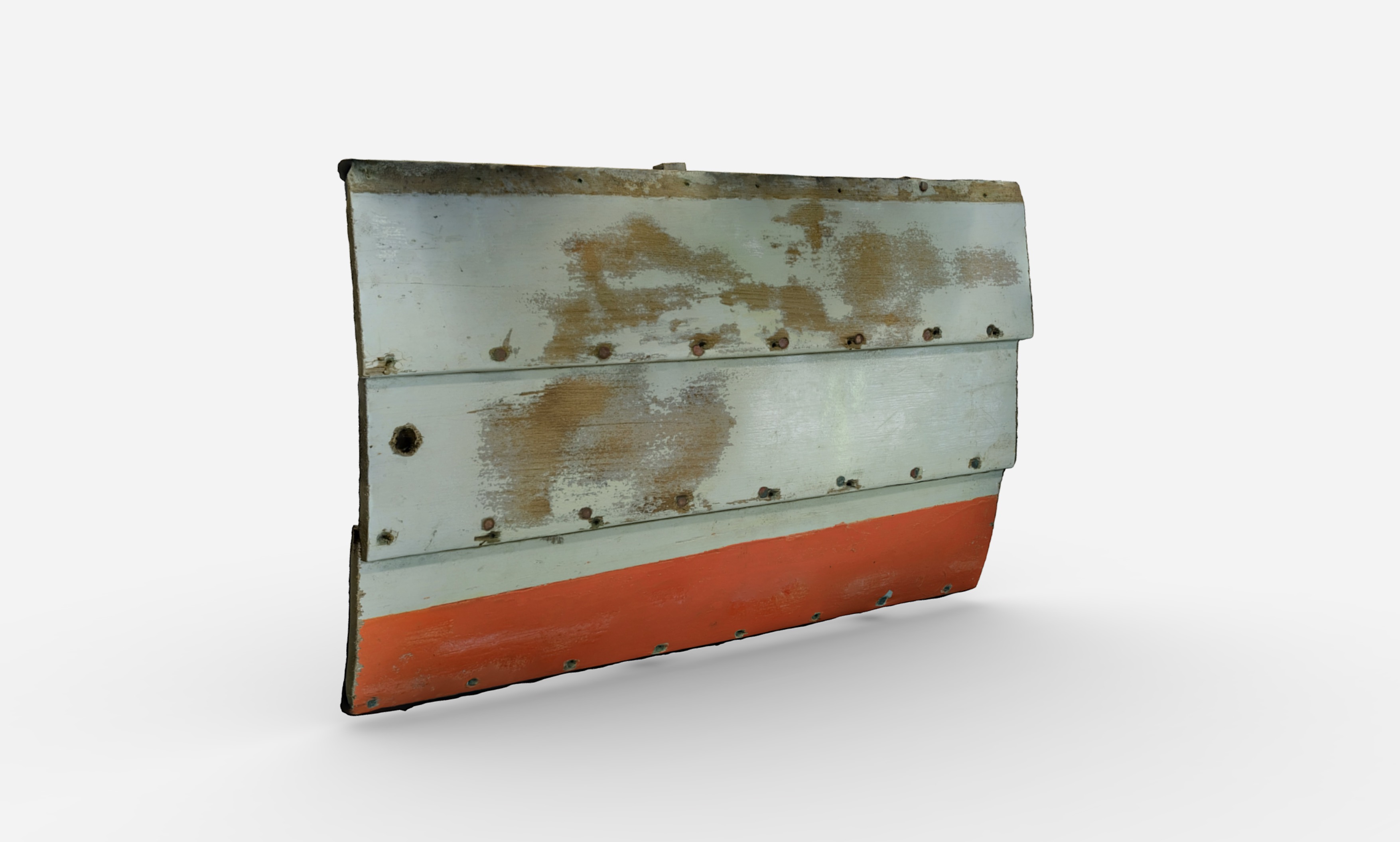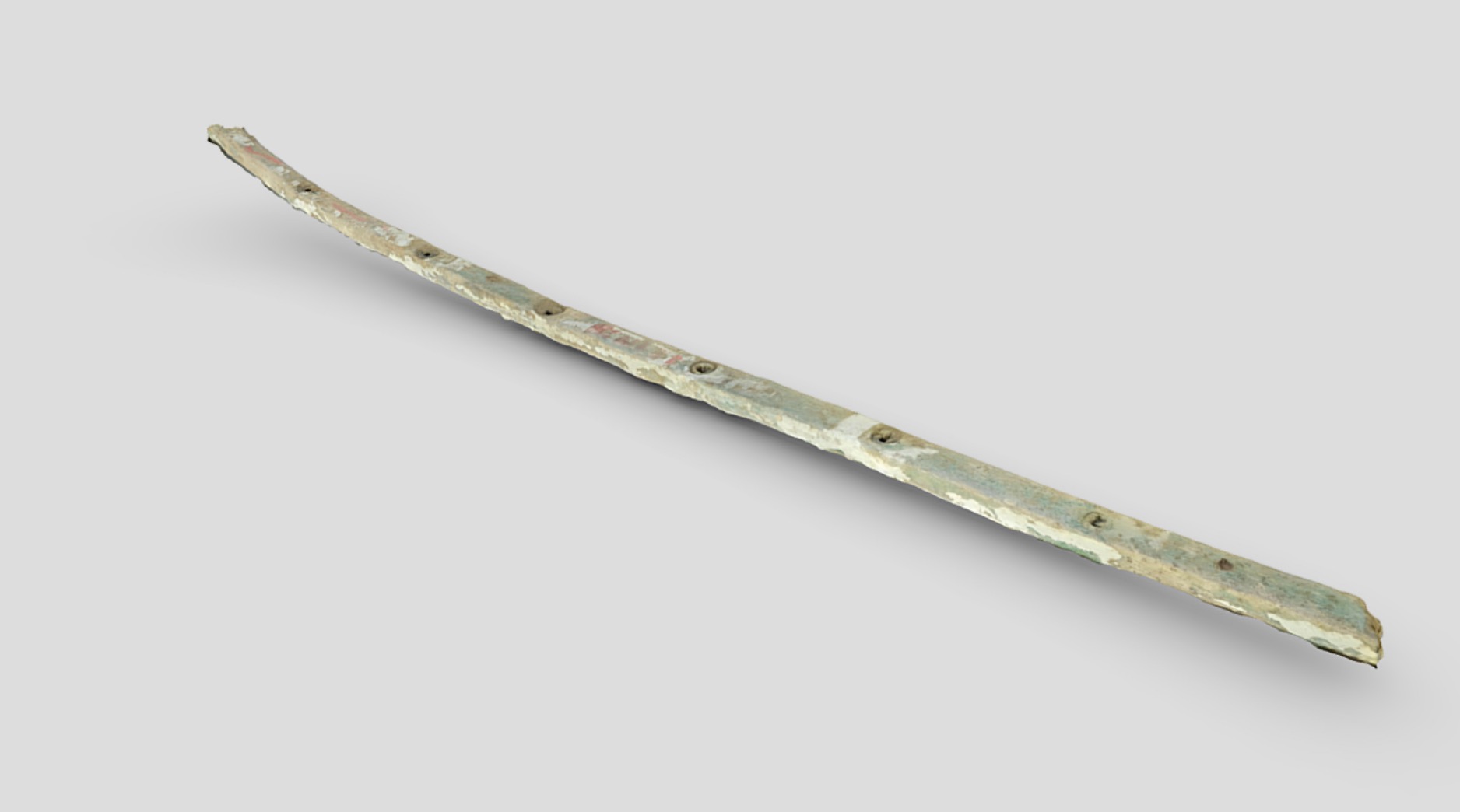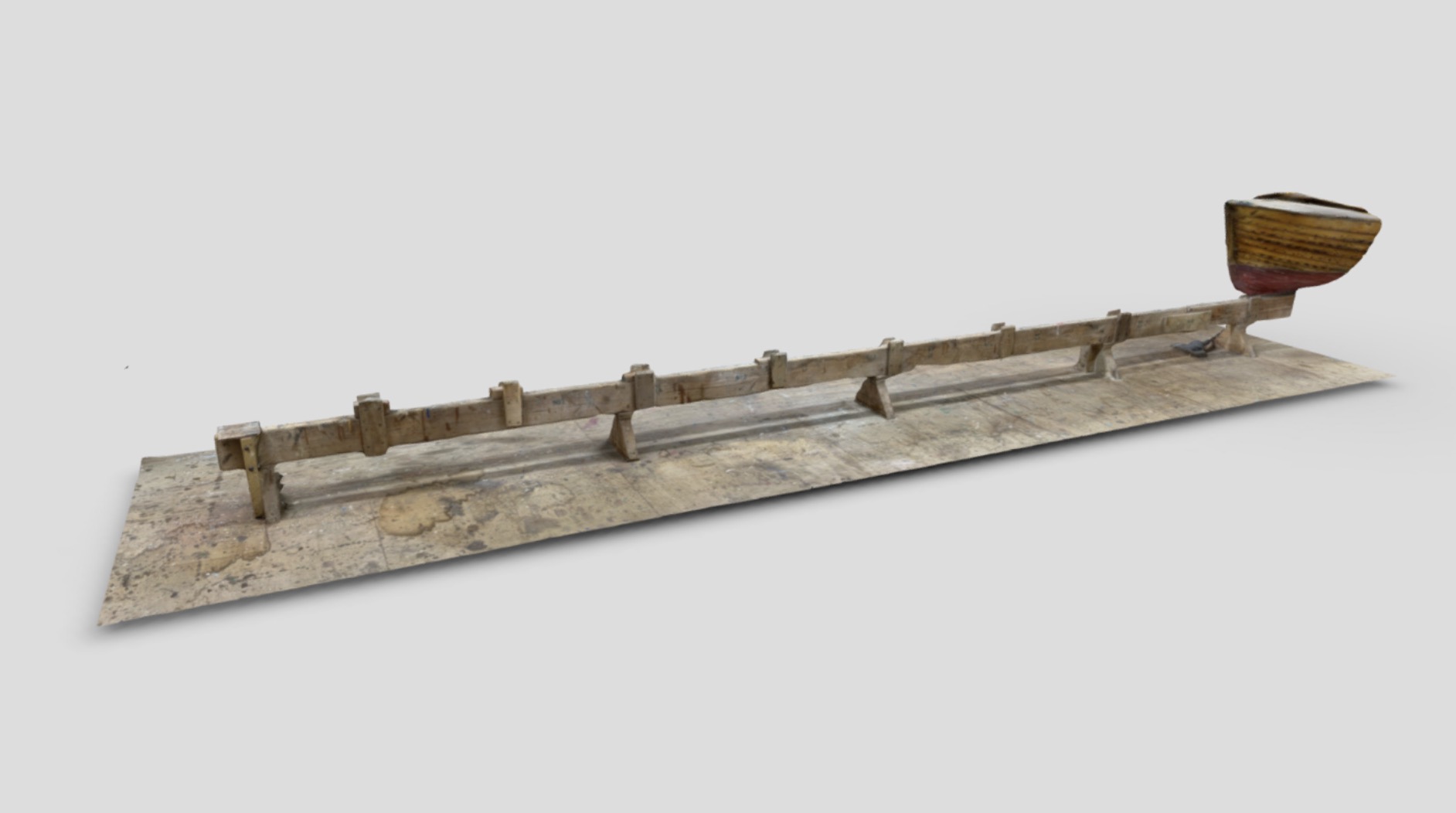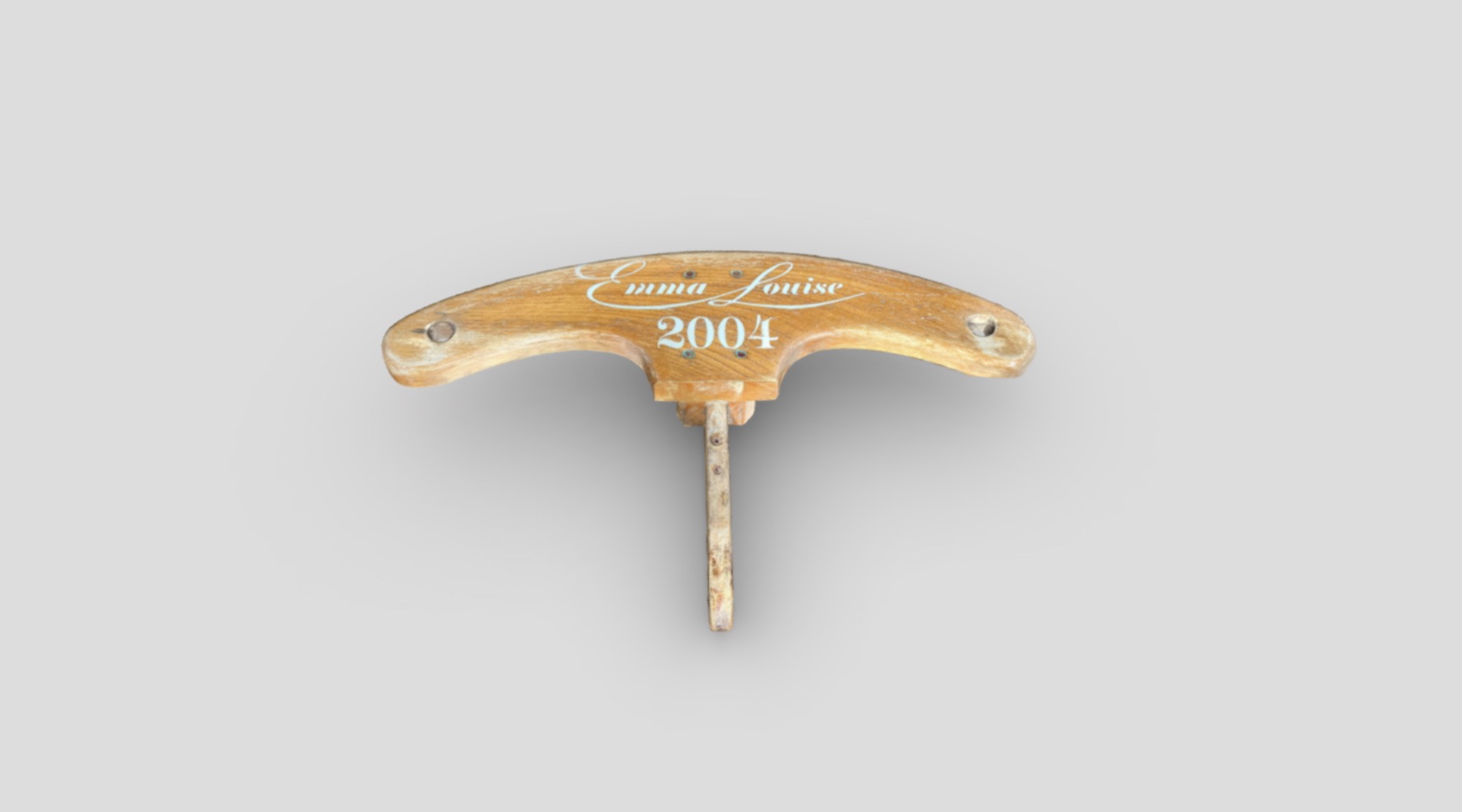Porths and Gigs of the Isles of Scilly
Porths and Gigs of the Isles of Scilly: Home | The Project | Around Hugh Town | Innisidgen, St Mary’s | New Quay, St Mary’s | Peraskin, Agnes | Great Par, Bryher | Beacon Hill, Tresco | Signal Rock, St Martin’s
Around Hugh Town, St Mary’s
Archaeology of the building of pilot gigs
The traditional design of gigs, evolved in Scilly and Cornwall, was particularly suited to running into a head sea, helping pilots reach sailing ships driven on the prevailing westerly winds (Milly Edwards, pers. comm.). It was developed further by Cornish master builder William Peters in the early 19th century at Polvarth, St Mawes. Peters made almost all the historic gigs preserved on Scilly (mostly taken to Newquay and restored c.1954), and many more formerly kept on the islands. He also supplied to Newquay in 1838 the gig Treffry, whose lines are used as the model for racing gigs today (Photo 1).
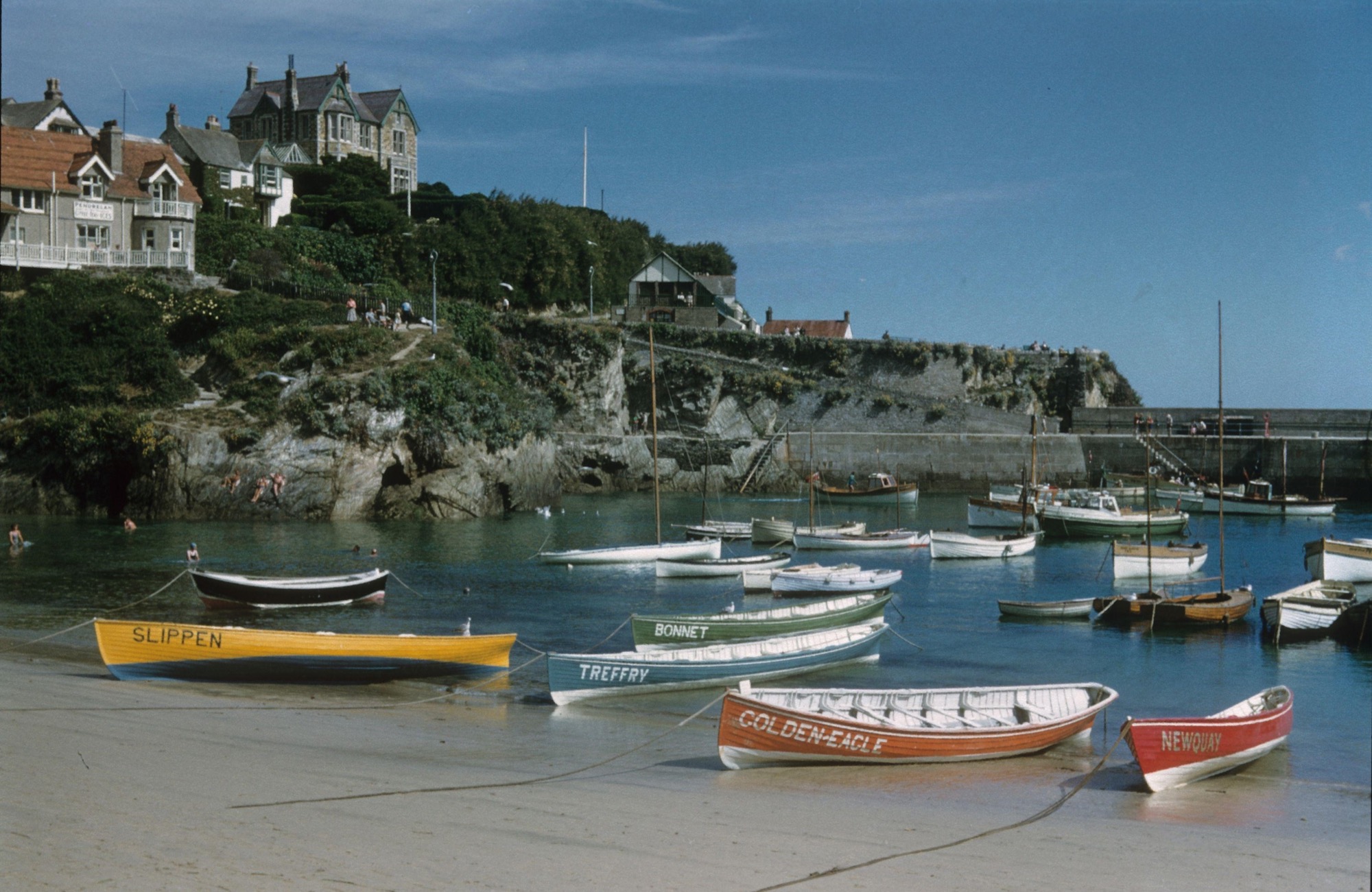
1: Historic gigs from Scilly, taken to Cornwall in 1954; Slippen and Bonnet originally kept at Par Beach, St Martin’s ─ Slippen later went to St Agnes, and Bonnet to Bryher and Tresco ─ and Golden Eagle kept at Great Porth, Bryher (where Bonnet joined her). ICS12/2280, Gigs, Newquay Harbour, 1956 © Charles Woolf Slide Collection, University of Exeter Penryn Campus
Pilot gigs were also built on St Mary’s; in addition to sailing ships, dozens of which were commissioned and operated by owners on Scilly in trading ventures around the world in the mid-19th century. One shipyard, taken on in 1875 by William Gluyas (1841-1923) from his uncle William Mumford, lay above Town Beach opposite his uncle’s Lyonesse House on Lower Strand.
Traces of Gluyas’ yard are visible at Holgates (named after a later hotel that once stood here) where gigs are stored annually for the racing championships. An 1862 map shows the wall against an alley, at the townward end of Holgates Green, that once formed one side of shed in the yard (Photo 2). Gluyas built a gig in 1877, sold to St Agnes’ pilots and named the Klondyke in 1897, conserved in Scilly’s Museum collection (Photo 3). Plans for restoration and display of Klondyke as part of a renewed museum and cultural centre are now in development.
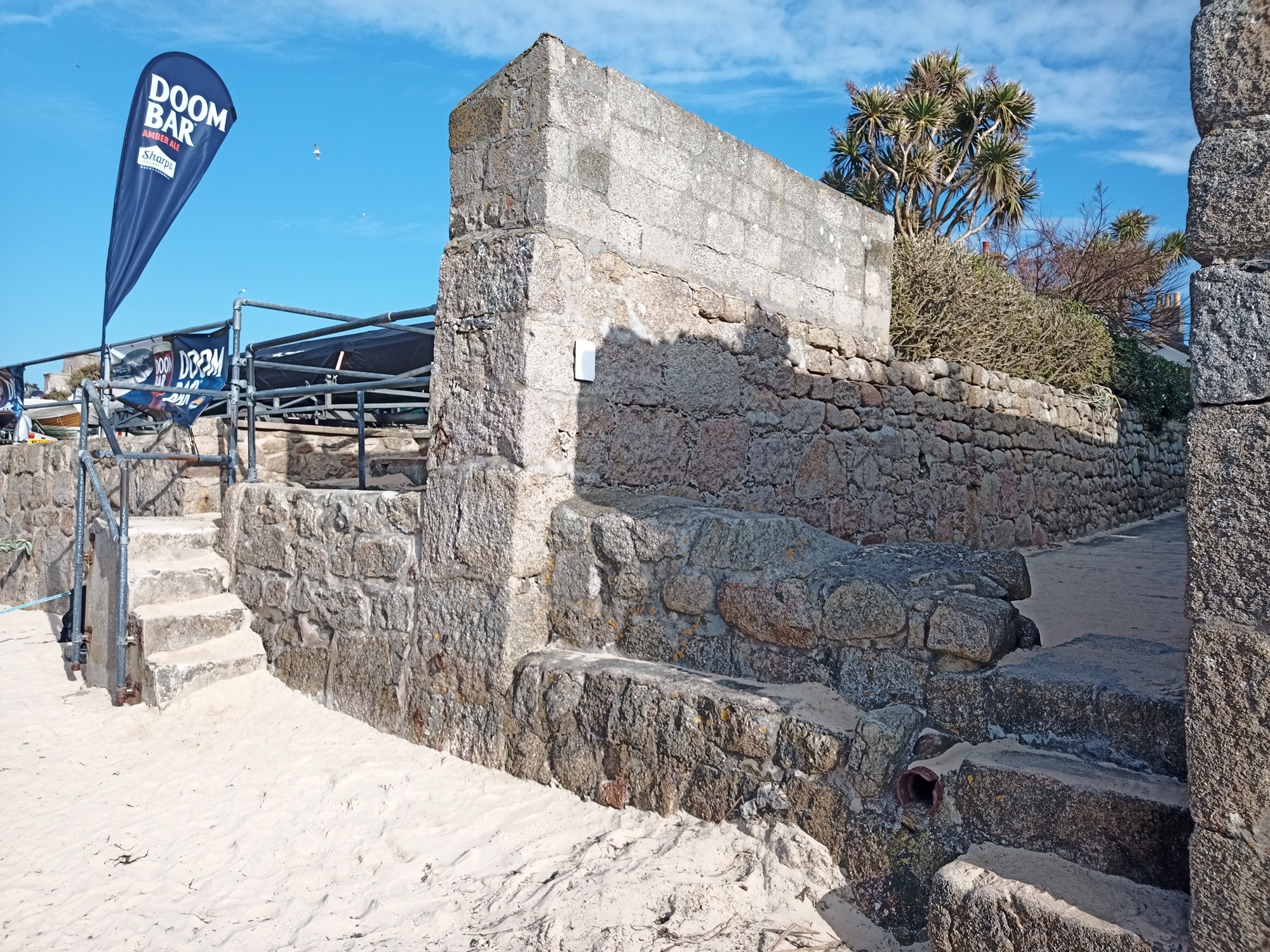
2: Edge of the old boatyard of William Gluyas, builder of the gig Klondyke, now part of Holgates Green. The wall against the alley with concrete top, and the later steps with modern rails, mark where the two long sides of one of the sheds of Gluyas’ day ran back to end at the Strand.
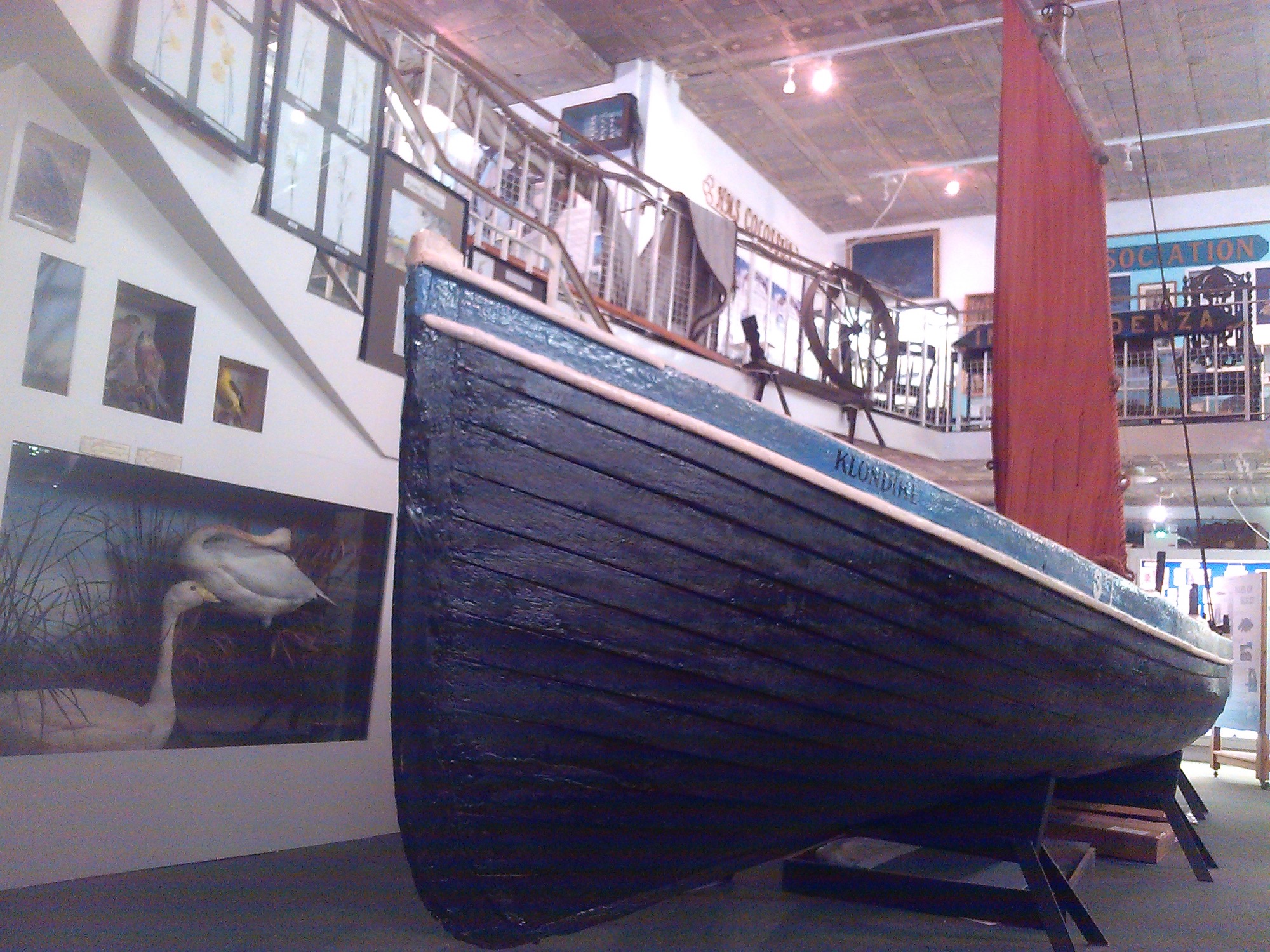
3: The 1877 gig Klondyke in Scilly’s old Museum. Alfred Jenkins noted her sails were from Czar.
Klondyke was used for lighthouse tendering work, based on St Agnes. Sheds where she was kept at different times survive as walled platforms, at Porth Conger. They lie either side of the road, downhill from the present Shah shed (thanks to Marigold Hicks for information) (Photo 4).
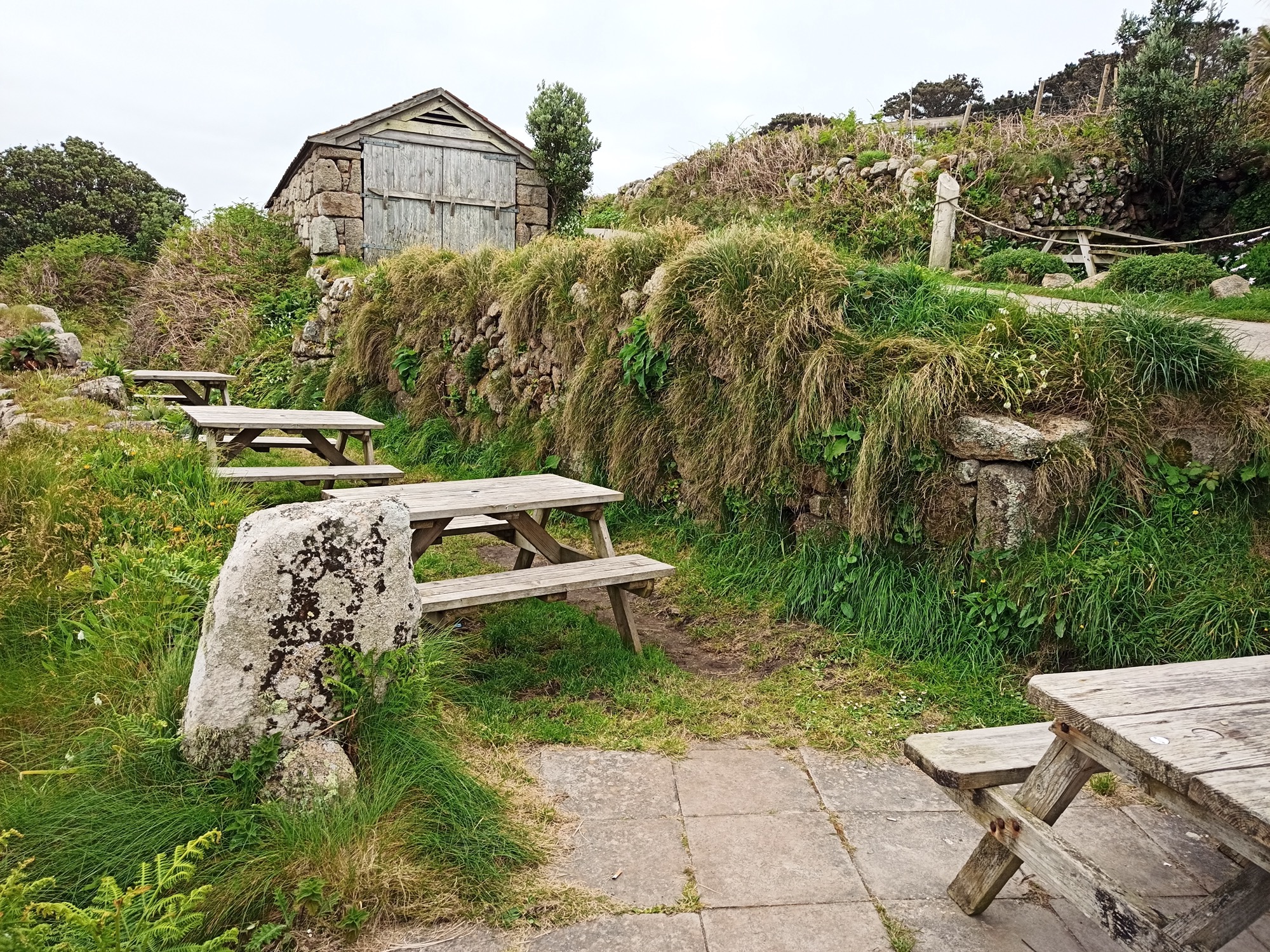
4: Sites of sheds, now roofless walled platforms, once used for the Klondyke, either side of the road at St Agnes, near the Turk’s Head pub (a former coastguard station with its own slipway). The shed now housing Shah, rebuilt in old style, stands above; a slipway slants down left of it.
More recently, Tom Chudleigh used a converted glasshouse in a yard behind the Strand, on Wellcross Lane, to build racing gigs for Scilly (Photo 5). These include St Mary’s Serica (1967) ─ using lines of the old gig Bonnet, as noted by Alfred Jenkins ─ and St Martin’s Dolphin (1969).
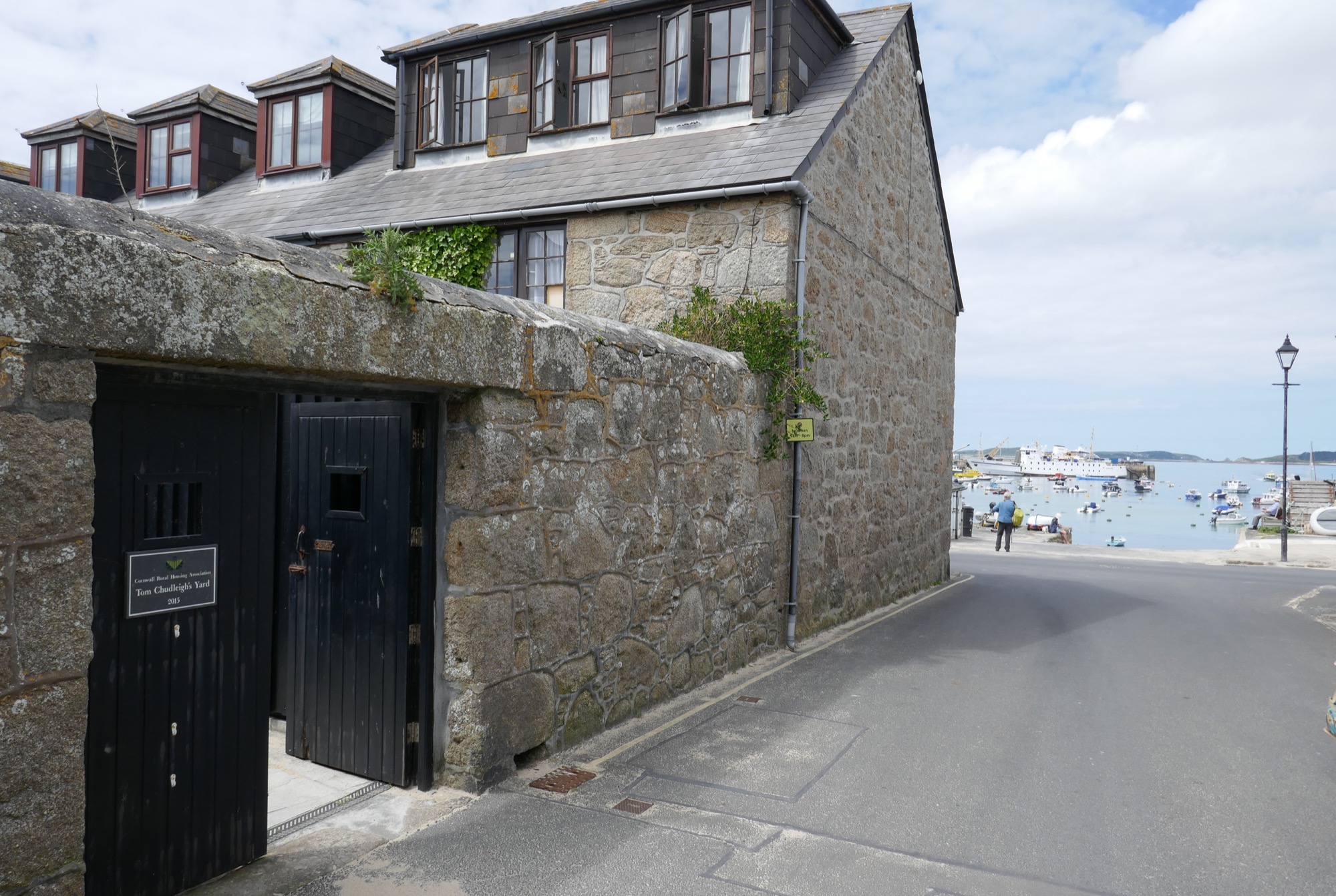
5: Tom Chudleigh’s yard on Wellcross Lane where he built gigs in the 1960s, with the head of the old Rechabite slip used by earlier boatbuilders below it across the Strand. To the right (north) of the slip, traces of the front of a former shed, in the sea wall, mark where the gig Leo was kept.
At St Mary’s present boatyard, at Porthloo, parts of old gigs replaced during past repair work are preserved by Andrew Hicks (Photo 6). Thanks to Andrew, a selection of these pieces was included in the Porths and Gigs scanning and modelling work.
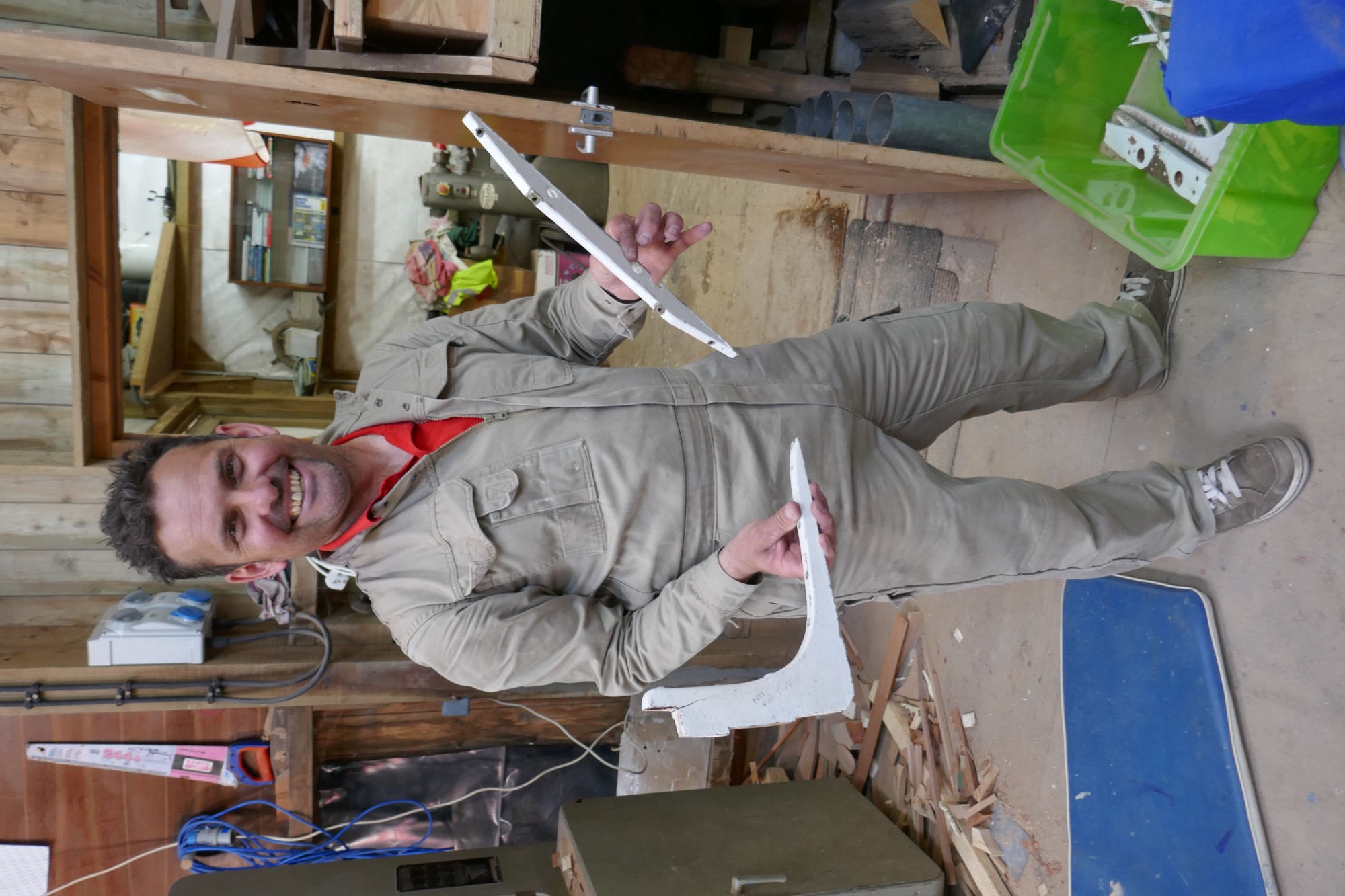
6: Andrew Hicks with parts from past repairs to the Czar - a knee that held the no. 1 thwart, and a piece with thole pin holes from under the gunwale at one of the rowing positions.
Pieces from pilot gigs were preserved by other builders too, notably Ralph Bird of Devoran. St Agnes’ new racing gig, Cetawayo has laminated wood conserved from a different old gig, recorded by name, fitted in each section (builder Patrick Bird, pers. comm.).
Archaeology could reveal more about gig building and their materials, predominantly elm (Photo 7). Their age could be investigated by tree-ring pattern dating or by oxygen isotope analysis (Cathy Tyers, Historic England, pers. comm.). Elm cut for boatbuilding is sometimes found buried in mud, in the Fal estuary near St Mawes. Gig builders, like the Peters, would season timber in the creeks for 4 or 5 years. On Scilly, archaeological remains of gigs themselves could potentially survive, through burial in sand, for example. As historic maps show, sites of many gig sheds now lie under dunes, like a whole group on the west of the green at Periglis, St Agnes.
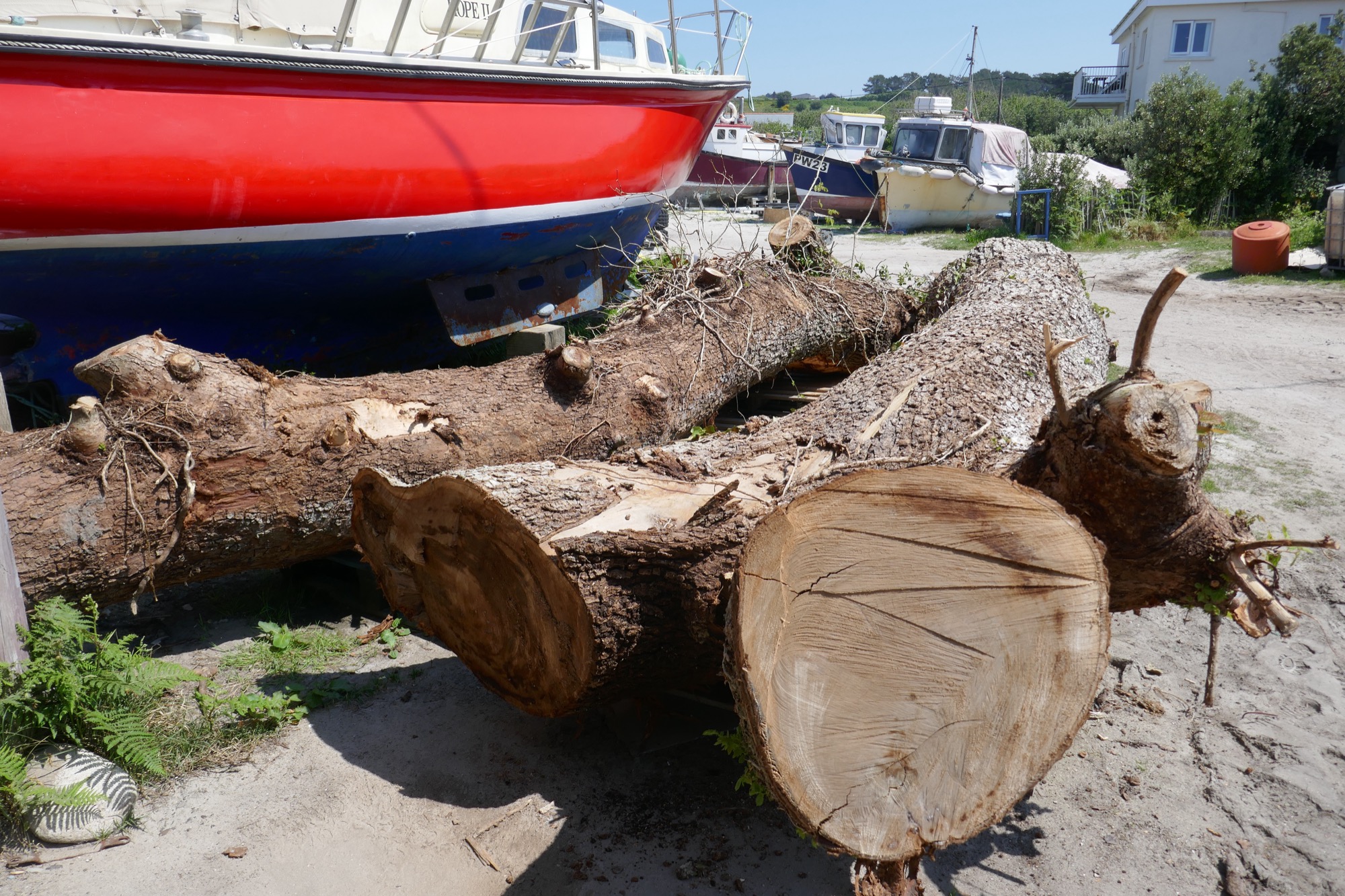
7: Elm from St Mary’s Holy Vale, at Porthloo boatyard, showing its dense grain; elm was once prolific on the Roseland, where most of the old gigs now surviving on the islands were built.
An exciting recent discovery, at St Agnes, is part of a gig used as panelling in a house (thanks to Harry and Tamaryn Legg). Harry has identified the piece as probably part of the gig Bee, apparently based on St Agnes by 1841 when she went out to the fatal wreck of the Thames on the Western Rocks (as recorded by Alfred Jenkins). The early elm planking and paint of the piece have great archaeological potential (Photo 8). It may be that more remains of this kind survive, in other contexts, since re-use and adaptation of material is a strong island tradition.

8: Harry Legg with the part of a gig he discovered and identified as the Bee built in 1838, which had been re-used as panelling at St Agnes.
3D models
The virtual 3D models of gig components presented here were made courtesy of Andrew Hicks of Porthloo boatyard.
Nailing model from the building of Nornour by Gerald Pearne of Looe in 1971 for St Mary’s, demonstrating the gigs’ clinker construction and fastening. It shows the stages of securing planks with copper nails or ‘rivets’. Nails are held inside by ‘roves’ or copper washers, by trimming them and driving them down over the roves.
Planks are made of narrow-leaf elm, making them both durable and flexible, strong and light. They are only ¼ inch thick! This allowed gigs to be carried when needed – it could be a 100m haul up from the sea to the gig sheds at low water, as the project surveys show.
Nornour was kept at Pendrathen, before moving to the new, traditional style sheds at Porth Mellon. Pendrathen was used for pilotage, and transport between the islands, from c.1759. Old gigs kept there included Boot, Chance, Railway, and Whaler, and the Bee that ended up on St Agnes. Remains of their houses include Norman’s Shed, a gig shed rebuilt slightly shorter, leaving part of the old wall protruding behind it.
View the 3D model on Sketchfab
Bow rib from 1830 gig Bonnet, probably from before she went to Cornwall c.1954 (Andy Hicks, pers comm.). Ribs were traditionally of oak, so in the bow they could be as thin as this one, 1/2 by 3/8 inch. Layers of paint indicate long use; pilot gigs could be black, or coloured.
Bonnet was kept at Par Beach (Higher Town Bay), St Martin’s, near the sheds there now. She moved to Tresco, then Bryher, where she was kept at Great Porth in the roof of the Golden Eagle shed now a studio, then back to Tresco (Richard Jenkins, pers. comm.).
Bonnet was named in tribute to an islander who waved her bonnet to the gig for luck from Cruther’s (or Gullis) Hill above Par Beach (Stuart Jenkins, pers. comm.) Signalling by waving a jacket or hat was called swaysing, as recorded at the time of the Delaware wreck in 1871. The crew of the Albion of Bryher swaysed from North Hill, Samson, for a second gig to pull over to help save men they’d rescued from a raging sea by carrying their gig all across Samson to reach them.
View the 3D model on Sketchfab
Board for building a gig to the design of the 1838 Peters gig Treffry, 32’ long and 4’10” beam. This board was used by Peter Martin to build gigs including Taran for Mount’s Bay (1999) and Morlader for Penryn (2001).
The board allows ‘moulds’ of plywood to be held at stations along the gig’s keel with the stem and transom (bow and stern) timbers rising at its ends. Planks are secured to the profile made by these formers, and ribs, gunwales and thwarts are fixed.
Besides the skill of William Peters, the success of the St Mawes yard that produced this design may reflect its siting, near Falmouth with its Royal Mail packet and other shipping requiring gigs, and within a day’s sail from Scilly.
Peters was also well-supplied with elm, widespread on the Roseland before elm disease. Mature elm can still be seen on Scilly, not struck by the disease. The islands, anciently wooded as shown by pollen analysis, had few trees by Victorian times and shipyards here imported timber, much of it from Redbridge, Southampton.
View the 3D model on Sketchfab
Steering yoke of the gig Emma Louise built by Peter Martin for St Mary’s in 2004, named after the daughter of artist John Heywood who donated the gig (thanks to Andrew King for information). In the past, new gigs were often given names of ships for which the pilots had provided salvage or rescue work, earning fees that paid for the gig. Golden Eagle refers to the gold dollars paid to Bryher pilots for saving the crew of the American ship Award in 1861.
Yokes are traditional, the steering ropes fixed to their holes allowing the cox holding them to move to different positions and to turn the gig rapidly. They were so called as they resemble the neck yokes of the pairs of oxen used for ploughing in Cornwall and Scilly into the 18th century.
Rope was manufactured at the height of shipbuilding on Scilly, c.1840-1870, in a long structure at Porthloo, partly restored as a shed. Straw was woven previously to hold the thatch used to roof gig sheds as well as houses. Rope was also shipped in, or salvaged from wrecks.
View the 3D model on Sketchfab
Sources
Jenkins, AJ, 1975. Gigs and Cutters of the Isles of Scilly. Integrated Packing Group Ltd. and the Isles of Scilly Racing Committee
Larn, R, and Banfield, R, 2013. Built on Scilly The history of shipbuilding on the Isles of Scilly between 1774 & 1891. Shipwreck & Marine: St Mary’s
Williams, Captain G, 1862. Plan of St Marys Town at UK Hydrographic Office (ref. D6365 Oh.)
2024 ‘History of Pilot Gigs on the Roseland’, talk by Milly Edwards (Roseland Gig Club chairman)
Porths and Gigs of the Isles of Scilly: Home | The Project | Around Hugh Town | Innisidgen, St Mary’s | New Quay, St Mary’s | Peraskin, Agnes | Great Par, Bryher | Beacon Hill, Tresco | Signal Rock, St Martin’s
